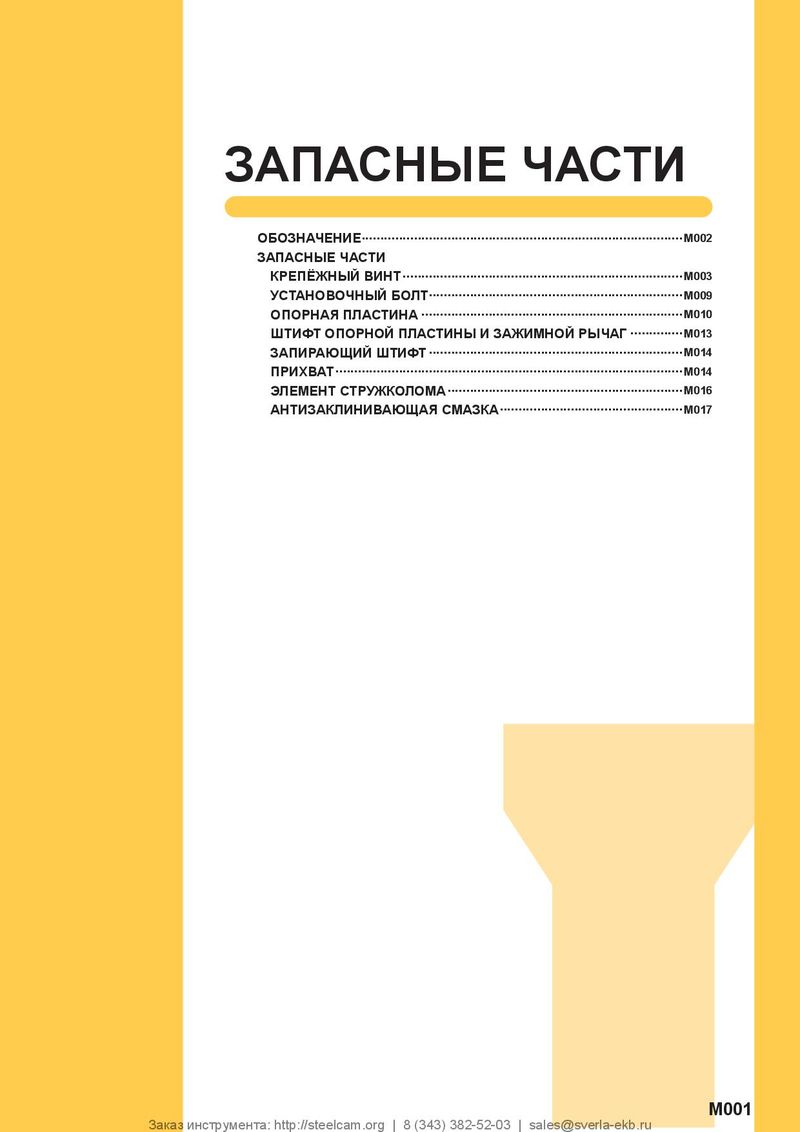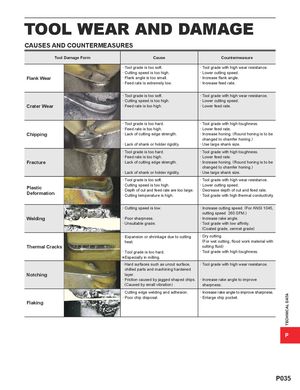Общий каталог Mitsubishi 2020 - 2021 - страница 1750
Навигация
 Каталог Mitsubishi Materials запасные части
Каталог Mitsubishi Materials запасные части Каталог Mitsubishi Materials резьбонарезной инструмент
Каталог Mitsubishi Materials резьбонарезной инструмент Каталог Mitsubishi Materials СНП с CBN и PCD для токарной обработки
Каталог Mitsubishi Materials СНП с CBN и PCD для токарной обработки Каталог Mitsubishi Materials сверлильные инструменты
Каталог Mitsubishi Materials сверлильные инструменты Каталог Mitsubishi Materials расточной инструмент
Каталог Mitsubishi Materials расточной инструмент Каталог Mitsubishi Materials пластины для точения
Каталог Mitsubishi Materials пластины для точения 
TOOL WEAR AND DAMAGE CAUSES AND COUNTERMEASURES Tool Damage Form Cause Countermeasure · Tool grade is too soft. · Tool grade with high wear resistance. · Cutting speed is too high. · Lower cutting speed. Flank Wear · Flank angle is too small. · Increase flank angle. · Feed rate is extremely low. · Increase feed rate. · Tool grade is too soft. · Tool grade with high wear resistance. · Cutting speed is too high. · Lower cutting speed. Crater Wear · Feed rate is too high. · Lower feed rate. · Tool grade is too hard. · Tool grade with high toughness. · Feed rate is too high. · Lower feed rate. Chipping · Lack of cutting edge strength. · Increase honing. (Round honing is to be changed to chamfer honing.) · Lack of shank or holder rigidity. · Use large shank size. · Tool grade is too hard. · Tool grade with high toughness. · Feed rate is too high. · Lower feed rate. Fracture · Lack of cutting edge strength. · Increase honing. (Round honing is to be changed to chamfer honing.) · Lack of shank or holder rigidity. · Use large shank size. · Tool grade is too soft. · Tool grade with high wear resistance. PlasticDeformation · Cutting speed is too high. · Lower cutting speed.· Depth of cut and feed rate are too large.· Decrease depth of cut and feed rate.· Cutting temperature is high.· Tool grade with high thermal conductivity. · Cutting speed is low. · Increase cutting speed. (For ANSI 1045, cutting speed 260 SFM.) Welding · Poor sharpness. · Increase rake angle. · Unsuitable grade. · Tool grade with low affinity. (Coated grade, cermet grade) · Expansion or shrinkage due to cutting · Dry cutting. heat. (For wet cutting, flood work material with Thermal Cracks cutting fluid) · Tool grade is too hard. · Tool grade with high toughness. *Especially in milling. · Hard surfaces such as uncut surface, · Tool grade with high wear resistance. chilled parts and machining hardened Notching layer. · Friction caused by jagged shaped chips. · Increase rake angle to improve (Caused by small vibration) sharpness. · Cutting edge welding and adhesion. · Increase rake angle to improve sharpness. · Poor chip disposal. · Enlarge chip pocket. Flaking P P035 TECHNICAL DATA